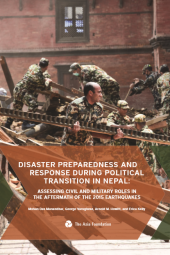Disaster Preparedness and Response During Political Transition in Nepal
Summary
This policy briefly highlights the key factors that inhibited effective coordination between the Nepal Army and the civilian agencies of the Government of Nepal (GoN) and identifies potential ways to improve future disaster responses. It explores factors hindering effective coordination and suggests avenues for improvement, including the potential support of international organizations in bolstering Nepal's disaster response coordination. The insights are derived from a thorough review of disaster management plans, reports, and stakeholder interviews.
The crucial need for improved domestic military-civil coordination became evident, highlighting shortcomings in effectiveness. This imperative calls for a redefinition of the relationship between the military and civil authorities, a complex task intertwined with broader institutional changes in Nepal's political structure. Despite historical trust deficits stemming from the military's past role, signs of changing public attitudes are emerging. As Nepal transitions into a republic with a new constitution, the role of the military is evolving. The Nepal Army played a pivotal role in the earthquake response, showcasing its potential contribution to national welfare. Opportunities exist to enhance collaboration between the Nepal Army and civilian agencies, addressing vulnerabilities and improving future disaster responses.
Categories:
Report
Publisher:
The Asia Foundation
Published Year:
2017
